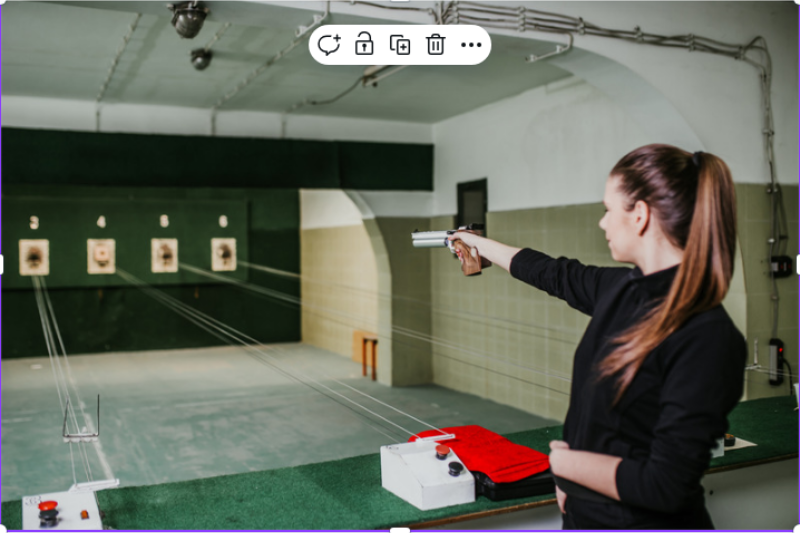In 2023 alone, U.S. workplaces reported over 2 million cases of nonfatal workplace violence, with a rising number of incidents involving theft, unauthorized access, and verbal or physical threats. Yet in many of these cases, something critical made the difference between escalation and prevention: someone noticed something—and acted. A receptionist who recognized a stranger trying to "tailgate" through a secure door. An employee who spotted an unattended backpack in a restricted area. These moments of attention—called situational awareness—often go unnoticed, but they’re the invisible shield that protects people and property every day.
In today’s evolving corporate landscape, situational awareness has become more important than ever. Offices are more open and fluid. Teams are hybrid, rotating in and out of shared workspaces. Vendors, delivery personnel, and clients regularly move through the building. All of this increases the chance that someone or something unfamiliar could slip through unnoticed—unless your staff is trained to spot it.
And here’s the key point: Situational awareness isn’t just for security personnel or facility managers. It’s a skill that every employee—from the front desk to the C-suite—should practice. Why? Because when more people are alert, fewer incidents slip through the cracks. Being aware can prevent a theft, defuse a confrontation, or even save a life. It’s an essential part of building a safer, more resilient workplace.
What Is Situational Awareness?
Situational awareness is more than just “paying attention”—it’s the ability to recognize and understand what’s going on around you, spot potential threats early, and make smart decisions to protect yourself and others. In a corporate environment, this means noticing the subtle details that might otherwise be overlooked: a door propped open, a frustrated customer raising their voice, or an unfamiliar person wandering near employee-only areas.
Perception – What do you see?
This is the first and most basic level of awareness: noticing your environment. Are all the exits clear? Is someone behaving in a way that doesn’t match the situation? Is there a bag left unattended in a conference room? Perception requires you to tune into your surroundings, rather than moving through your day on autopilot.
Comprehension – What does it mean?
Once you’ve observed something, the next step is understanding what’s going on and how it might impact you or others. For example, a person standing near a secure door might just be waiting for a coworker—or they might be trying to sneak in. Comprehension involves connecting the dots between your observations and your environment’s context.
Projection – What might happen next?
The most advanced level of situational awareness is the ability to anticipate outcomes. If you notice someone agitated during a heated meeting, you might start mentally planning how to defuse the situation or alert a supervisor. Projection helps you stay a step ahead, enabling you to take preventative action before a threat escalates.
Situational Awareness in Action: Corporate Threats It Helps Prevent
Being situationally aware helps employees recognize and respond to a range of common corporate threats, including:
- Theft of devices, intellectual property, or personal belongings
- Unauthorized access to secure areas or data systems
- Workplace violence, including verbal threats or physical altercations
- Harassment or intimidating behavior between coworkers or customers
- Cyber-physical risks, such as phishing attempts via suspicious devices or access points
By training your team to practice these three levels of awareness, your company can build a culture of vigilance—where safety, responsiveness, and accountability become part of everyday operations.
Why Situational Awareness Matters in the Workplace
Employee Safety
The most important reason to prioritize situational awareness is simple: protecting your people. An observant team member might notice a disgruntled visitor pacing near the reception desk, a coworker acting erratically, or someone attempting to bypass building access controls. Recognizing these signs early gives your team a chance to intervene before things escalate—whether that means notifying security, engaging management, or calmly redirecting a potential intruder.
Asset Protection
In today’s tech-driven workplaces, companies are responsible for safeguarding not just physical spaces but valuable digital and intellectual property. Situational awareness helps prevent theft—whether it’s a laptop left unattended in a conference room, sensitive files left open on a screen, or a stranger seen near a secured server room. Employees who are trained to notice small discrepancies are more likely to report issues before they become losses.
Emergency Response Readiness
In crisis situations—like a fire, medical emergency, or active shooter event—every second counts. A situationally aware employee doesn’t just react—they respond with clarity and purpose. Because they’ve been trained to observe exits, assess threats, and think one step ahead, they can move quickly and make decisions that protect both themselves and their coworkers. This kind of readiness can drastically reduce harm and save lives.
Stronger Workplace Culture
A security-conscious workplace is a safer, more connected one. When everyone—from interns to executives—is empowered to notice and report concerns, you build a culture of shared responsibility. People feel more confident, valued, and respected when they know their safety matters. It’s not about instilling fear—it’s about building trust and resilience at every level of your organization.
How to Cultivate Situational Awareness in Corporate Teams
Start with Training
Situational awareness begins with education. Many employees don’t realize what they should be looking for—or how to act if something feels off. That’s why structured training, like Guardian Training Center’s workplace awareness and response workshops, is essential. Through hands-on drills, real-life scenarios, and instructor-led discussions, employees learn what to watch for, how to interpret subtle cues, and how to respond confidently and legally.
Encourage the “What If?” Mindset
Ask your team to periodically pause and reflect:
“What if something unusual happened right now—what would I do?”
This simple question helps employees mentally rehearse responses to potential scenarios like an irate customer, a suspicious bag, or a fire alarm. It shifts thinking from passive to proactive, helping people build quick decision-making skills long before an incident ever occurs.
Use Walk-Throughs
Sometimes the best awareness comes from seeing your space differently. Organize regular office walk-throughs with key staff to identify:
- Blind spots or unsecured entry points
- Emergency exits and rally points
- Visibility issues (e.g., dark hallways or cluttered paths)
Invite employees to participate in these reviews—especially those who are frequently in different areas of the building, like receptionists, janitorial staff, or floor managers. Their insight is often invaluable.
Develop a Reporting Culture
One of the biggest barriers to crime prevention is hesitation. People often notice something suspicious but say nothing, either out of uncertainty or fear of overreacting. That’s why leadership must consistently reinforce this message:
“If you see something, say something. It’s always better to speak up than stay silent.”
Make it clear that all reports are welcome, even if they turn out to be false alarms. A supportive, no-blame culture helps reduce risks and increases employee confidence.
Introduce Smart Tools
Awareness is even more effective when paired with the right resources. Consider adding:
- Panic or alert buttons at key locations like reception or HR offices
- Internal communication channels for flagging concerns or sharing alerts
- Emergency floor plans with clearly marked exits and safe zones
- Checklists or pocket guides with signs to watch for and emergency contacts
When employees have both the skills and the tools, they’re empowered to act quickly and responsibly.
Empowering Your Team with Situational Awareness
In today’s fast-paced corporate environments, situational awareness is no longer optional—it’s a critical skill that every employee should possess. By learning to recognize and respond to subtle signs of trouble, your team can prevent incidents before they escalate, safeguard valuable assets, and contribute to a safer, more proactive workplace culture.
The good news? Situational awareness can be taught. With the right training, your staff won’t just be more observant—they’ll be empowered to act confidently and appropriately in the face of potential threats. From recognizing suspicious behavior to responding quickly in emergencies, every team member becomes a key player in your company’s safety strategy.
Let Guardian Training Center help you take that step. We offer on-site, expert-led situational awareness training tailored to your organization’s needs—whether you run a corporate office, healthcare facility, or customer-facing business.
📍 2333 Verna Court, San Leandro, CA
📞 (510) 626-4940 ✉️ info@guardiantc.com 🔗 www.guardiantc.com/contact






.svg)